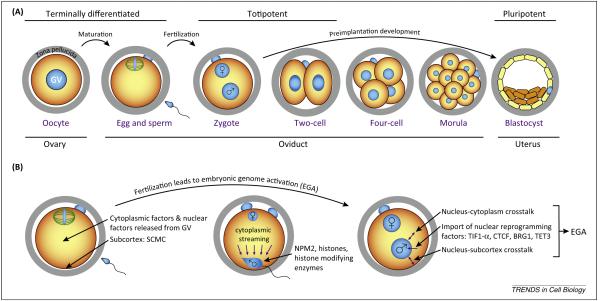Figure 1.
Mouse preimplantation development and maternal-to-embryonic transition. (A) After ovulation from the ovary into the oviduct, terminally differentiated mature eggs (surrounded by the extracellular zona pellucida) are fertilized by sperm to establish totipotent zygotes that divide during preimplantation development to become blastocysts prior to implantation in the uterus at embryonic day 4.5. (B) Upon fertilization, stored maternal factors activate the embryonic genome to trigger maternal-to-embryonic transition that results in formation of a totipotent zygote. Specifically, parental genomes are reorganized by chromatin remodeling factors with the aid of cytoplasmic streaming, and form pronuclei that import nuclear reprogramming factors and crosstalk with other cellular compartments. Abbreviations: BRG1, a chromatin remodeling protein; CTCF, CCCTC-binding factor; GV, germinal vesicle; NPM2, nucleoplasmin protein 2; SCMC, subcortical maternal complex; TET3, ten-eleven translocation protein 3; TIF-α, transcription intermediary factor 1 α.

